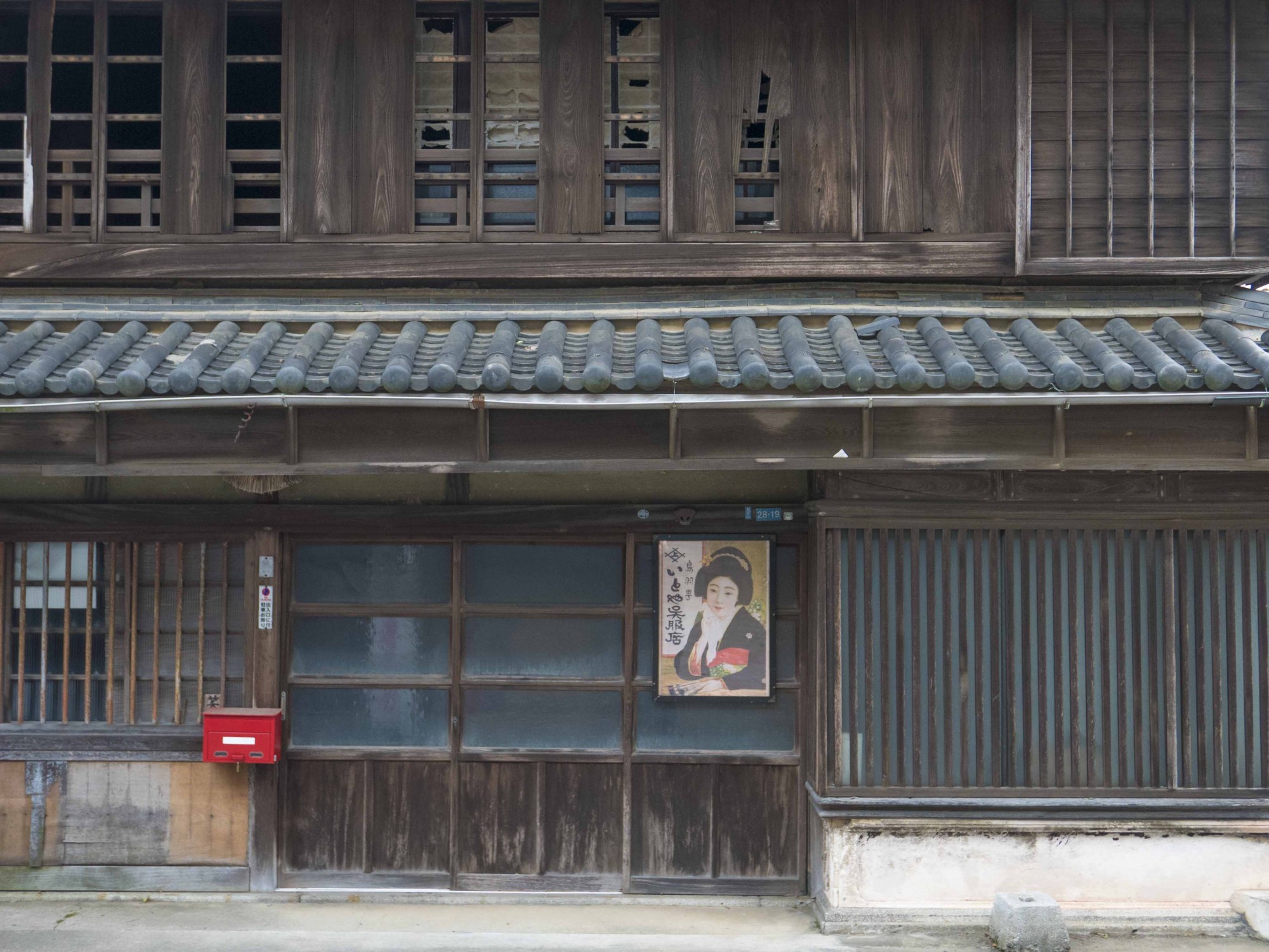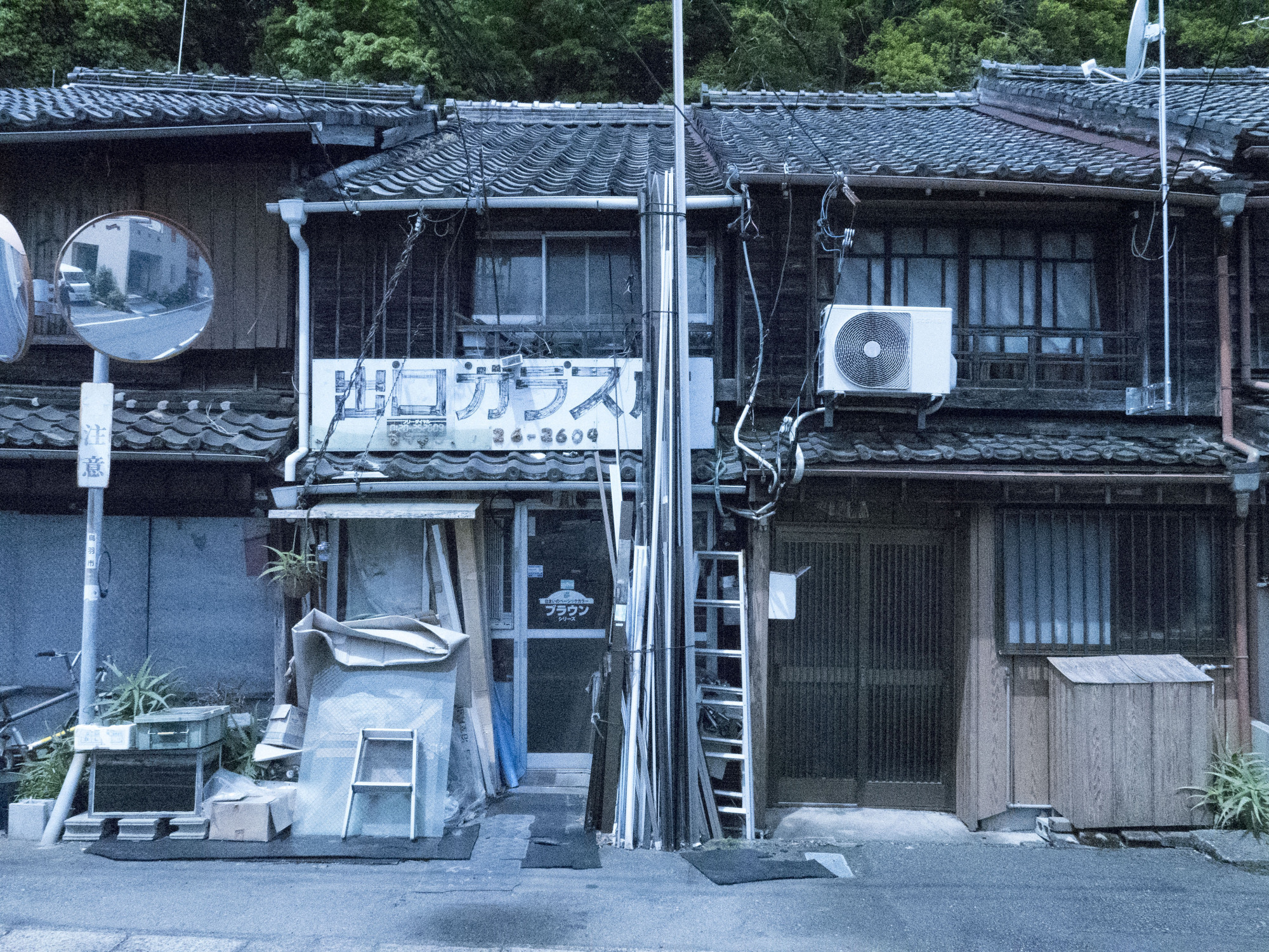In Europe, resilient materials like stone, brick and hardwoods, facilitate the restoration of heritage buildings, even after decades of being unused. Unoccupied buildings of a comparable age in Japan, composed of wood, clay, straw, plaster and ceramic tile, if not fastidiously maintained, rapidly lapse into decay. The physical degeneration hastening the decline of countless provincial towns in Japan typically accompanies a slew of aggravating factors, ranging from aging residents and the defection of young people to cities to the decline of local industries, agriculture and services as well as the lack of funding and will.
Entering the main street of Nakamachi, the oldest surviving quarter of the city of Toba in Mie Prefecture, the first store I see has a sign in English: "Retro Goods Sell & Buy." A first-time visitor to the city might be forgiven for thinking they have set foot in a haikyo, those abandoned amusement parks, public housing complexes, factories and rusting railway sidings so beloved by Japanese art photographers. Many of the shop fronts are shuttered, the rectilinear structures of prewar buildings warped into skewered angles; curtains hang in vacant homes like hanks of witch's hair, or salt-stiffened kelp. There are countless such micro communities in Japan in desperate need of urban revival. In the case of Nakamachi, there may have been early symptoms that went unnoticed, but urban erosion — slow, potentially terminal — appears to have manifested itself in the final days of the Showa Era (1926-89), and with the subsequent spluttering of the bubble economy.




















With your current subscription plan you can comment on stories. However, before writing your first comment, please create a display name in the Profile section of your subscriber account page.